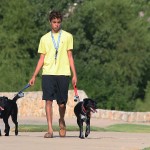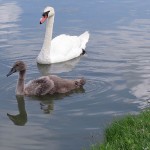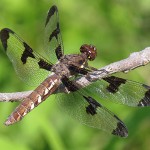Dateline – May 17, 2014
NOTE: This post is part of a continuing series of observations: [ First | << Prev | Next >> ]
There was some bad news with the Mute Swans this past week. From a brood that began with at least three baby swans we are now down to only one. This, from what I understand, is a very typical outcome at this pond. Every spring this pair hatches a sizable brood, but in the end it is usually only one cygnet that makes it to the fledgling stage.
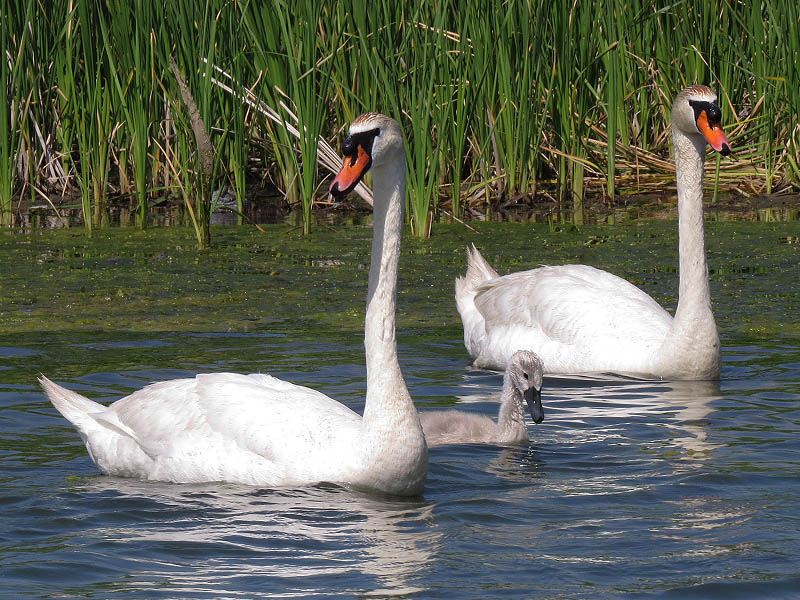
The first of the three baby swans was lost within days of hatching. We are not sure what happened to it. The second cygnet to disappear was nearly four weeks old and had grown to be quite large. As it turns out we have a pretty good idea what happened to him.
On Sunday, May 11 I received an email from a lady who I had been corresponding with about the swans. She had visited the pond earlier in the day and was present when the little swan met his demise. Sharon had been watching all four of the swans feeding together near the bank of the small lake, and when they exited the water she noticed that one of the babies was missing.
What happened was not quite clear at the time, but when we examined some of Sharon’s photographs we found that she may have actually recorded the incident as it occurred. In the pictures below you will first see all four of the swans feeding together with no signs of distress. In the second picture one of the baby swans is clearly in trouble. With most of its body under water it is being dragged down by something beneath the surface of the water. In the following photograph there is only one cygnet left. And in the last picture you can see that this young bird is also being harassed and is being forced to hold both of its feet out of the water.
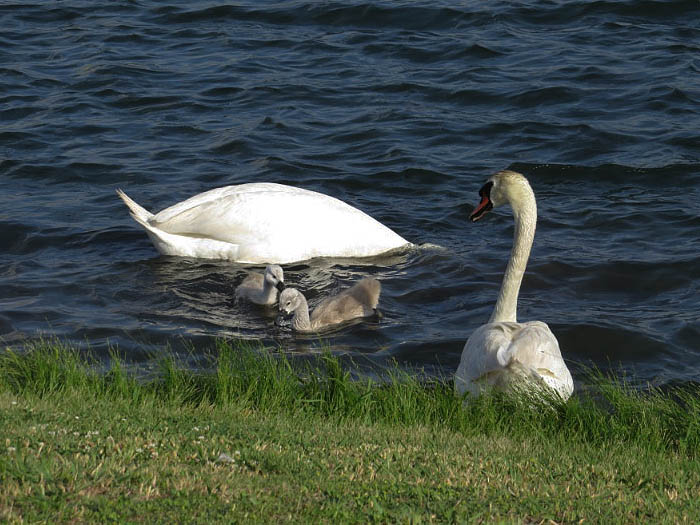
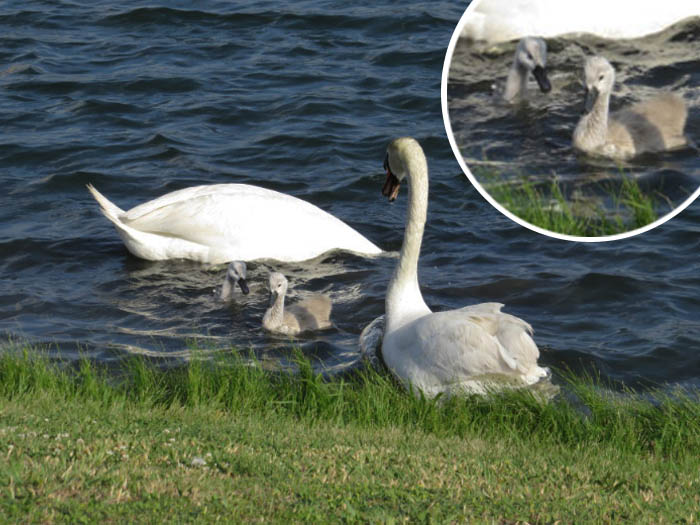


This sequence of photographs was taken in less than a minute. The Swans exited the water shortly afterward. Until then, it did not appear that the adults even recognized that there was a problem.
So, what happened to the little swan? I believe a Common Snapping Turtle is the likely culprit here. A good sized turtle would be able to easily sneak up on the group in the murky water. Once in position, the turtle could grab the cygnet by a leg or foot and pull it underwater without much difficulty.
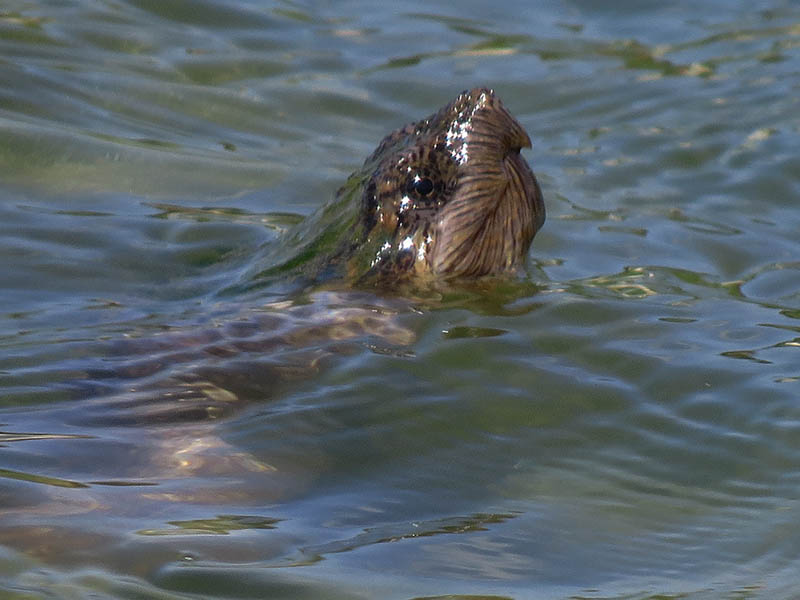
In the pictures below you can see that the remaining cygnet is now very close to the size of a full grown Mallard. But the baby swan is handicapped by something other than its size. At this age the cygnet is still unable to fly. Where a Mallard might take to the air at the first sign that there is a threat beneath the water, the little swan has to rely on its parents for its protection.
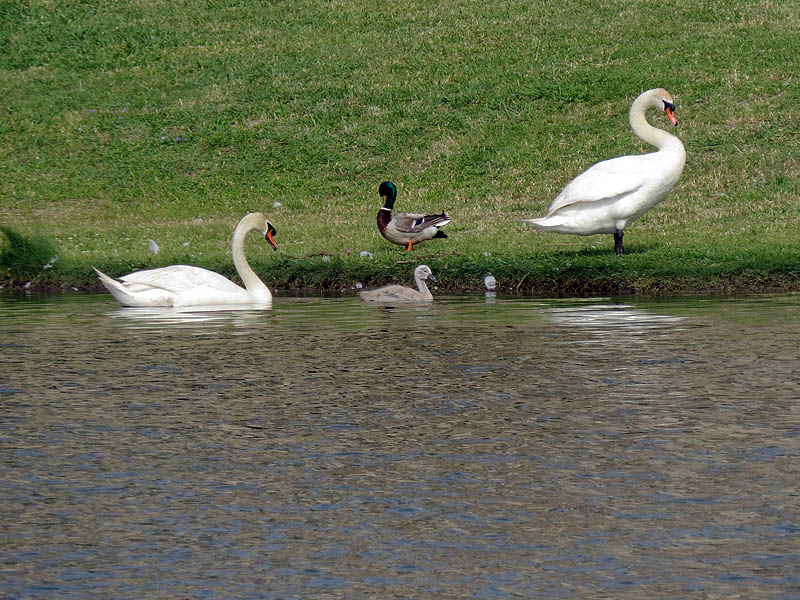
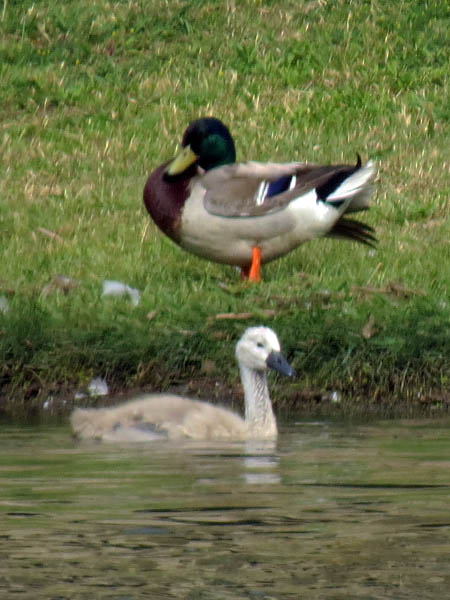
As of this past Saturday, the lone remaining cygnet is doing fine. He is receiving an abundance of his parent’s attention, and the two adults swans do their best to keep the youngster located between them to enhance his security as they go about their business. They also seem to be making a conscious effort not to stay in any one spot for too long.
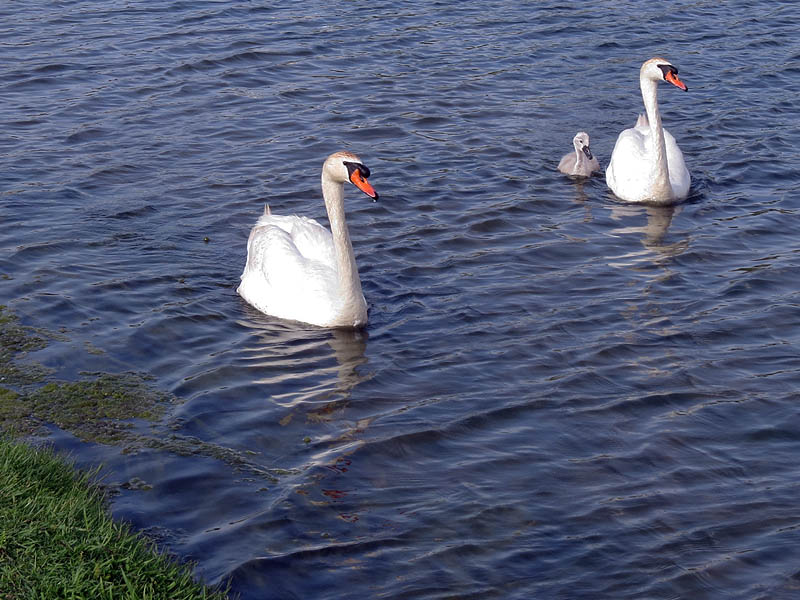

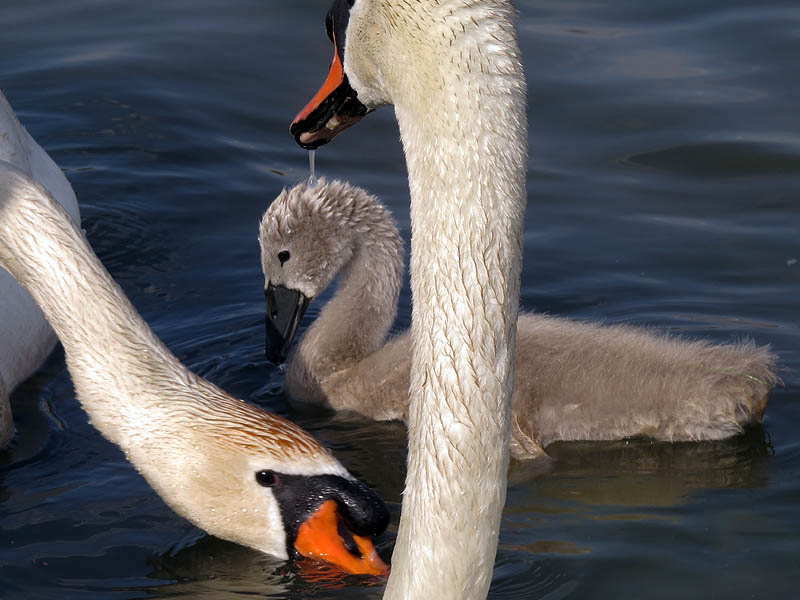
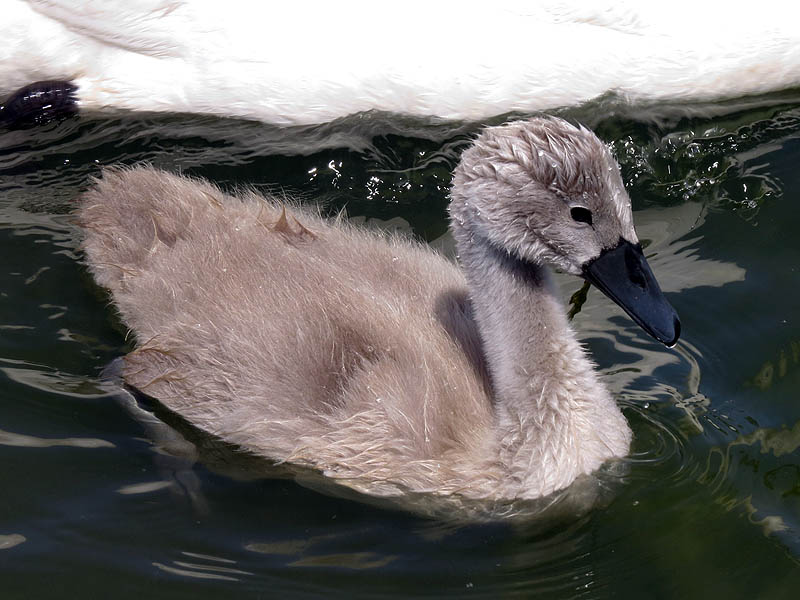
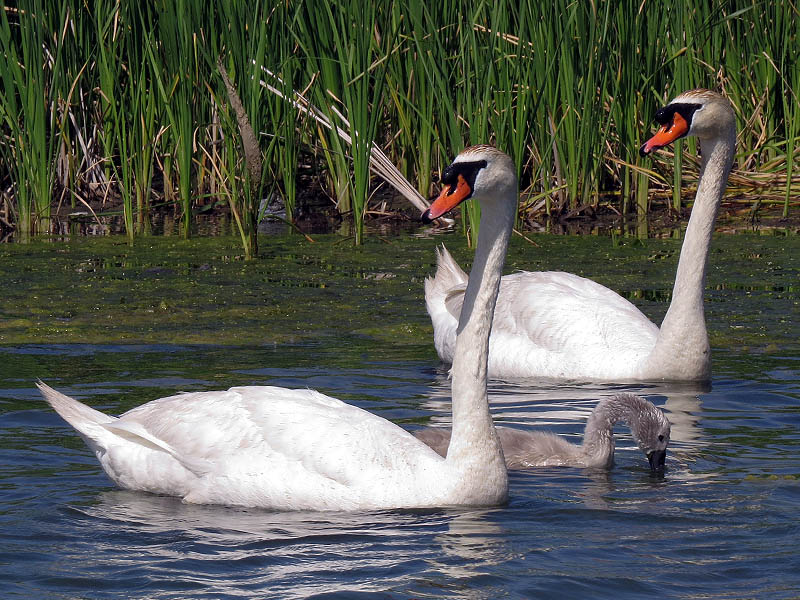
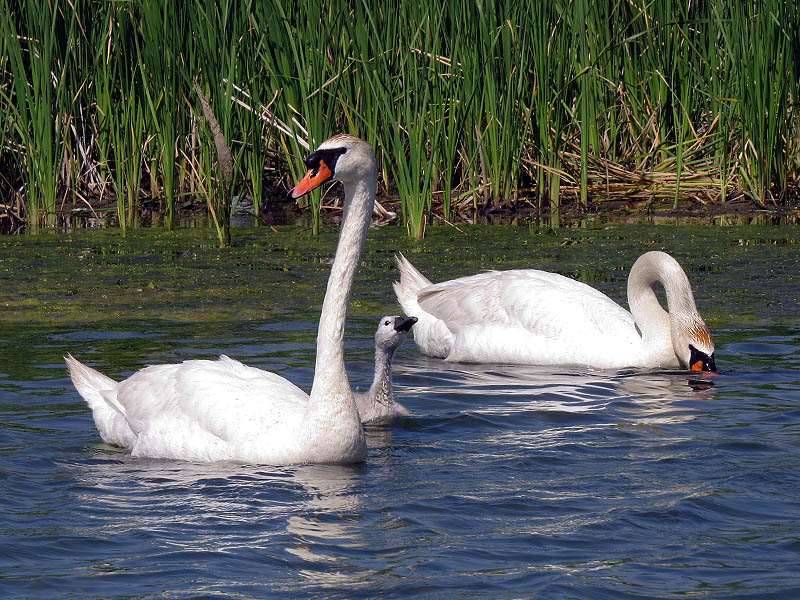
As is always the case, there was plenty of additional wildlife action at and around the park this weekend. First on the list were a pair of Northern Rough-winged Swallows who have been nesting in a nearby retaining wall. Their nest was located in a PVC drainpipe located just a little over a foot above the ground. This seems like a strange place to build a nest, but you just never know what to expect with urban wildlife!

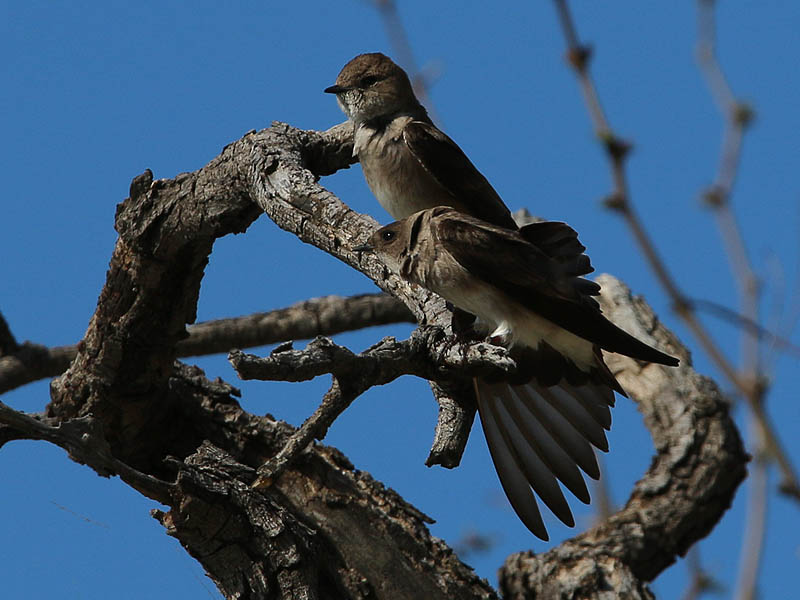
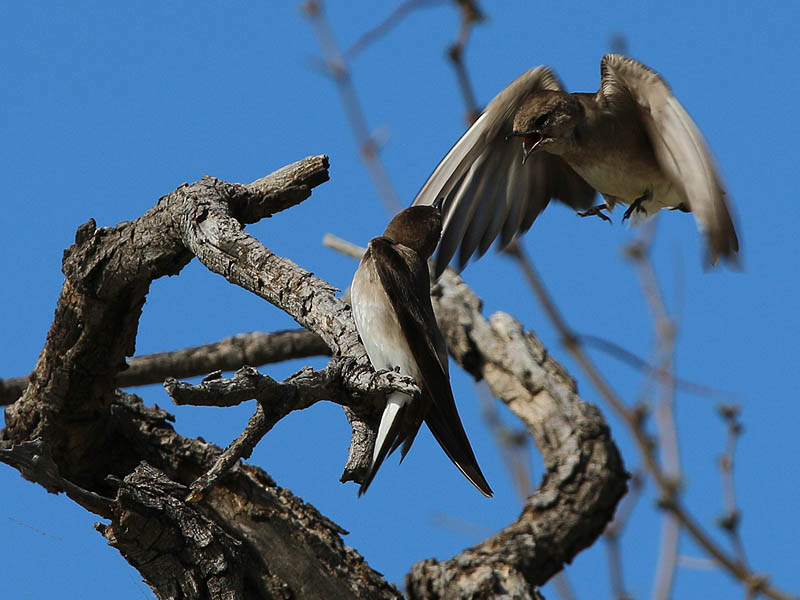

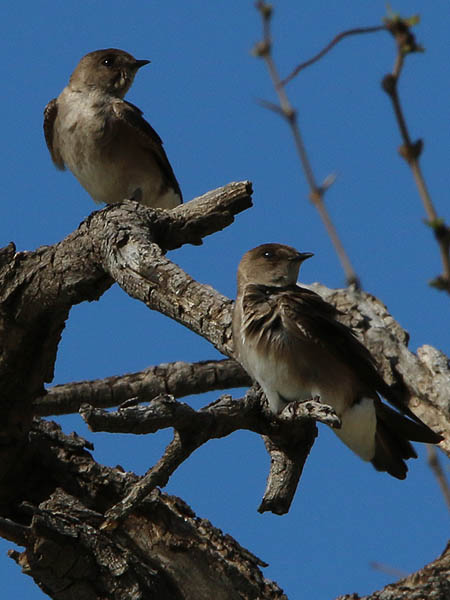
There are plenty of Northern Mockingbirds in this park, and it is always fun to watch these confident birds going about their business.
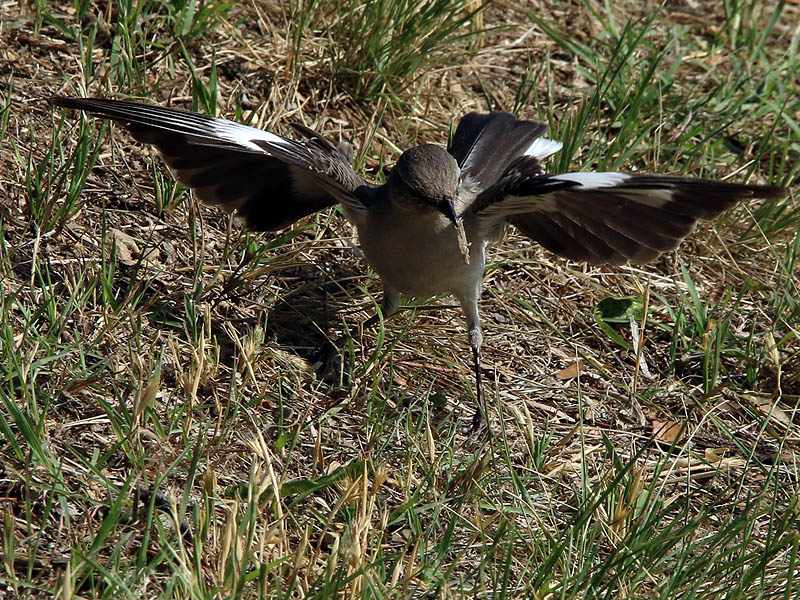
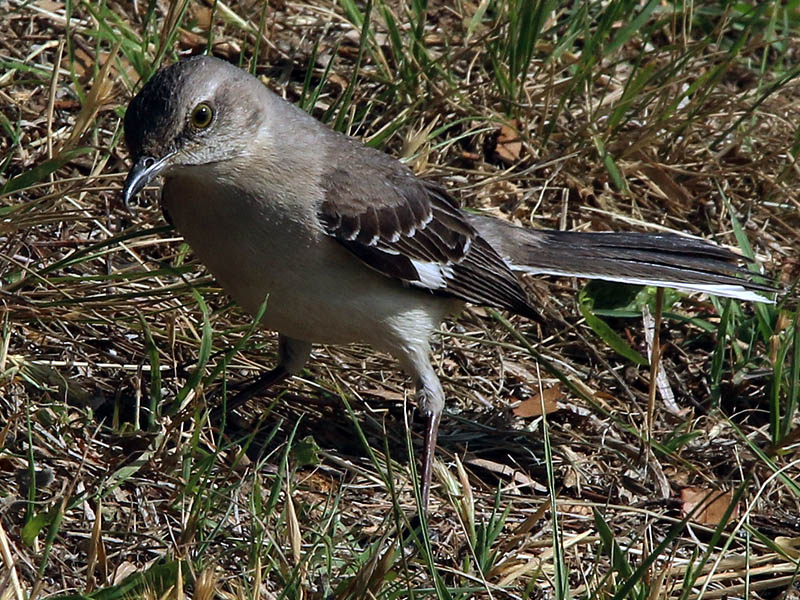
Another confident bird is the Great-tailed Grackle. These birds are bold to the point of being obnoxious. In the pictures below, you can see a group of both male and female birds gathered around the lakeside in order to collect pieces of bread that had been tossed into the water for the ducks and swans.
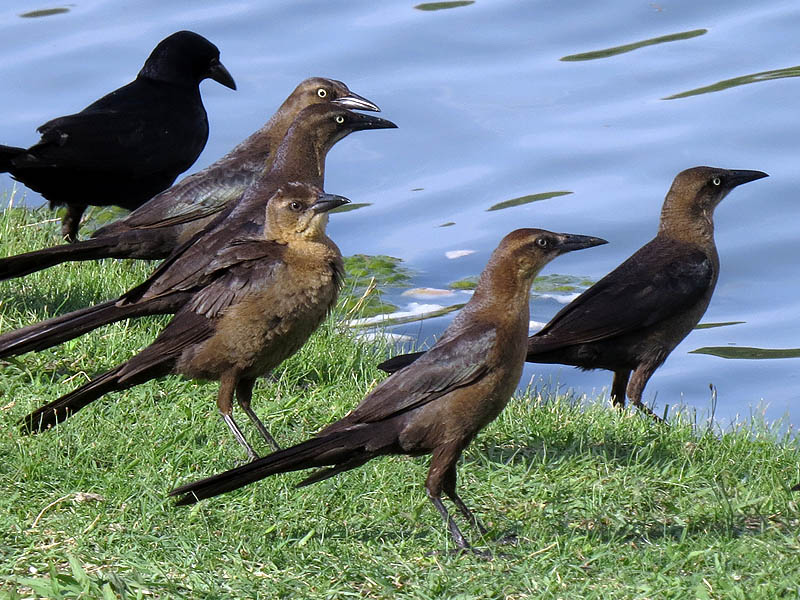
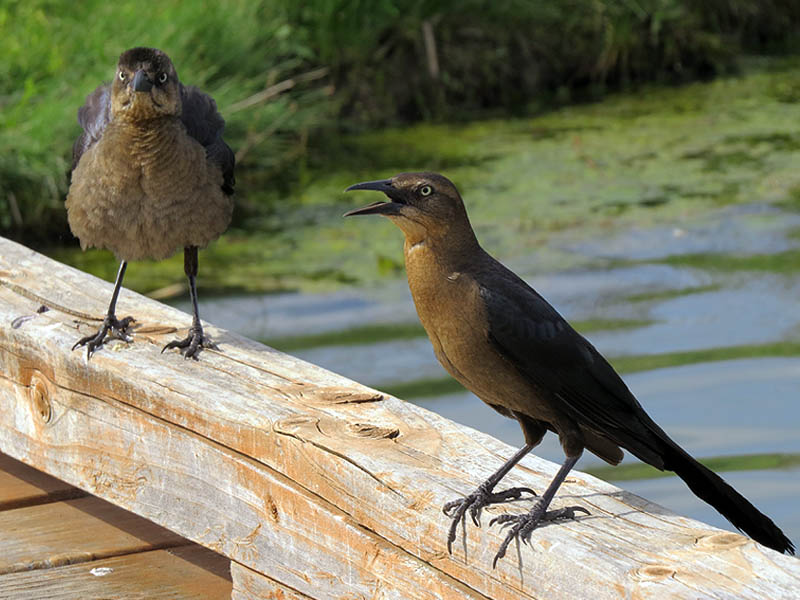

Grackles are highly adaptable birds, which is one of the reasons why they are so successful in an urban environment. Some of these grackles have learned to hover over the water so that they can reach down and pluck up choice pieces of bread. If the bread is not moist enough, some of the grackles will carry it back to the water for a thorough dunking before eating it.
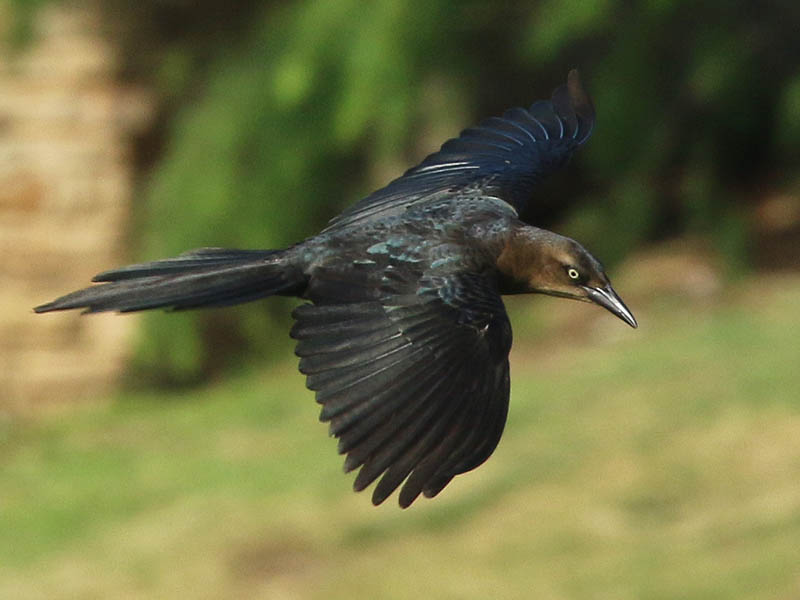

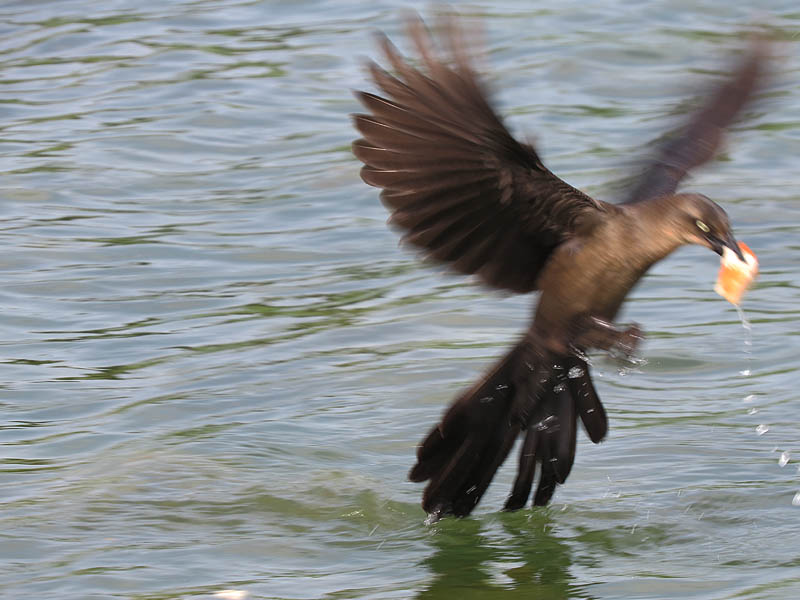
Some fledgling Great-tailed Grackles were present and waiting to be fed by their mother on a nearby Mesquite tree. Mom showed up a short time later with a nice juicy winged bug and there was much excitement.


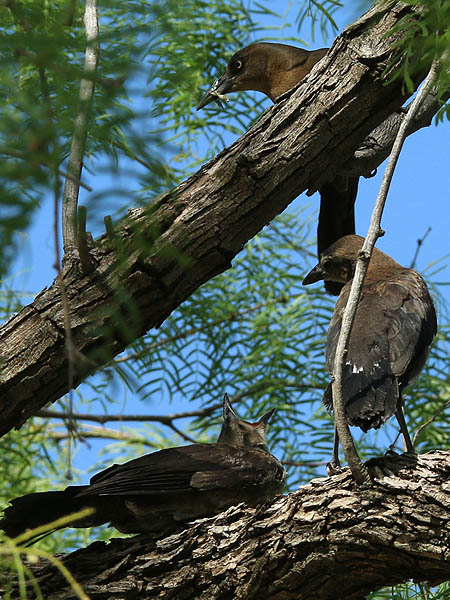
On the next tree over there was a fledgling Common Grackle also waiting for his mother to return. This juxtaposition provided a nice opportunity to compare the young of one species of North Texas grackle to that of the other.

Both White-winged and Mourning Doves can also be found in abundance at this park. One of the White-winged Doves that we saw was busying collecting nesting material. An adult Mourning Dove was found resting on the ground and nearby a juvenile Mourning Dove was seen perched in a tree. This independent young dove is a clear indication that many of our area Mourning Doves have already produced their first brood of young and are now working on their second of the season.

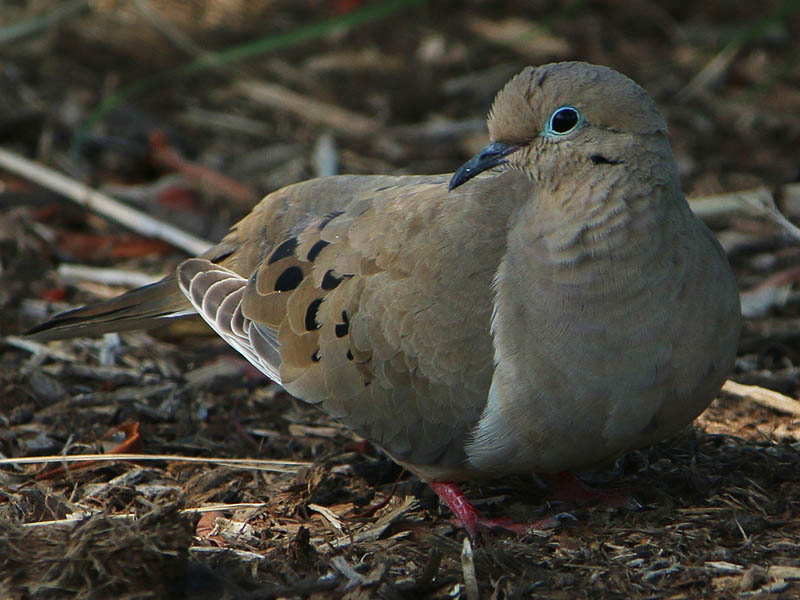
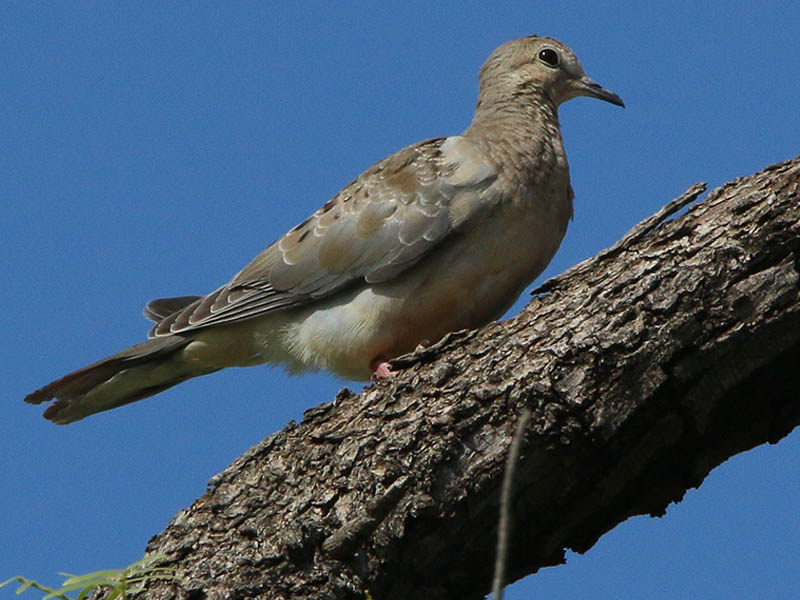
Representatives of the heron family of birds were also present on this afternoon. The ubiquitous Great Egret made his appearance and shifted from place to place around the small lake. At one point the egret joined its smaller cousin, the Little Blue Heron, combating the high winds as they both attempted land on the same small tree. A little further around the lake and we came across a skittish Green Heron searching for his next meal from a vantage point on the boardwalk high above the water.
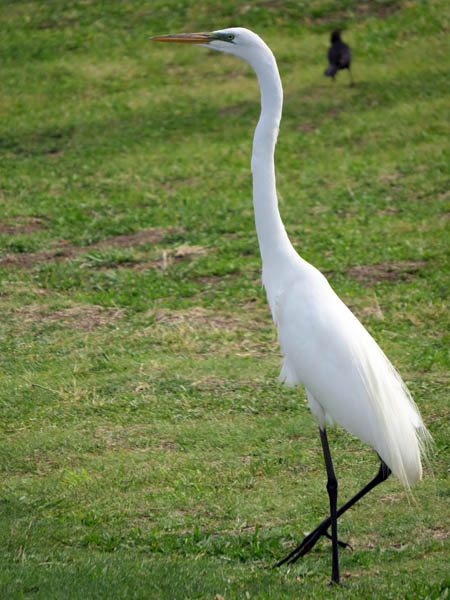
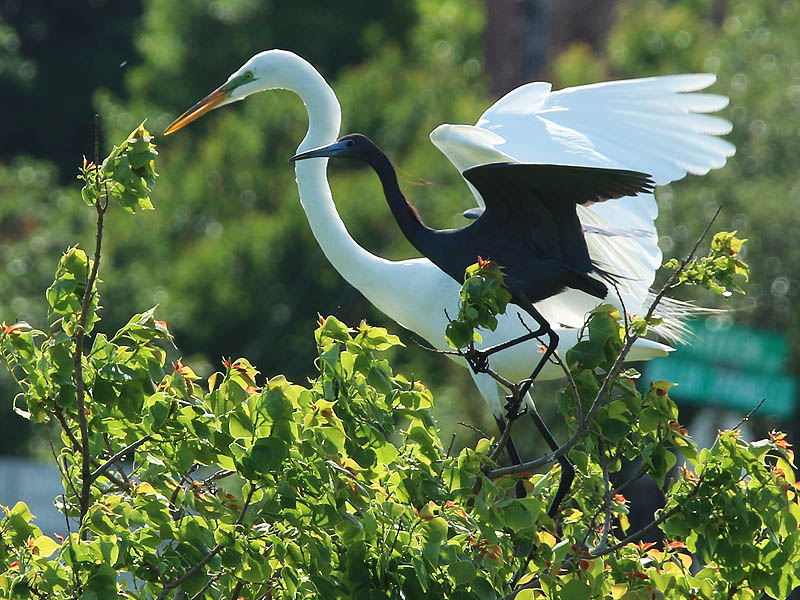
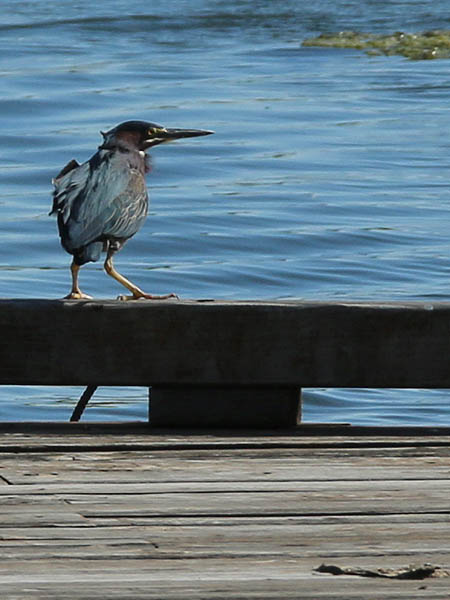
A lone American Coot was spotted patrolling the shallows near the marshy end of the pond. Coots generally like to congregate into large groups. It is not often that I see one alone. Here is what Wikipedia has to say about the coot’s distribution and preferred habitat:
American Coots are found near water reed-ringed lakes and ponds, open marshes, and sluggish rivers. They prefer freshwater environments but may temporarily live in saltwater environments during the winter months.
The American Coot’s breeding habitat extends from marshes in southern Quebec to the Pacific coast of North America and as far south as northern South America. Birds from temperate North America east of the Rocky Mountains migrate to the southern United States and southern British Columbia. It is often a year-round resident where water remains open in winter. The number of birds that stay year-round near the northern limit of the species’ range seems to be increasing.
Autumn migration occurs from August to December, with males and non-breeders moving south before the females and juveniles. Spring migration to breeding ranges occurs from late February to mid-May, with males and older birds moving North first. There has been evidence of birds traveling as far north as Greenland and Iceland.
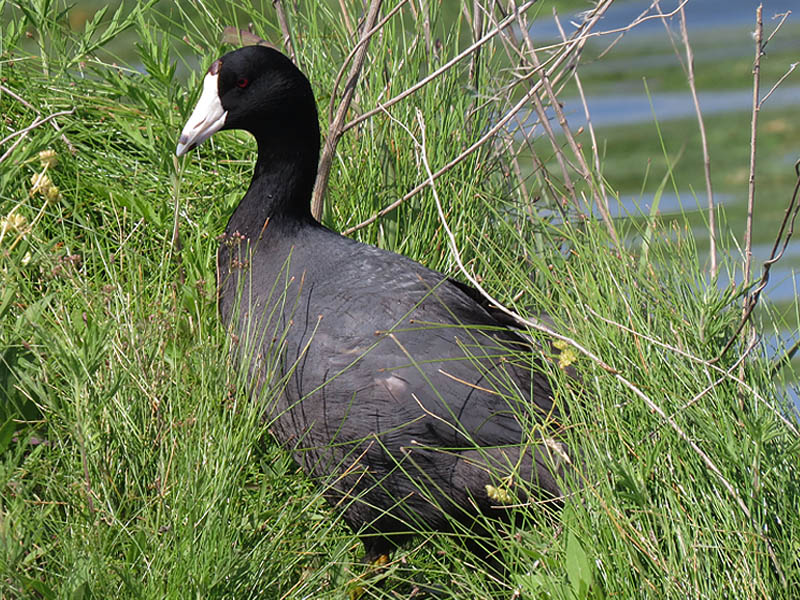
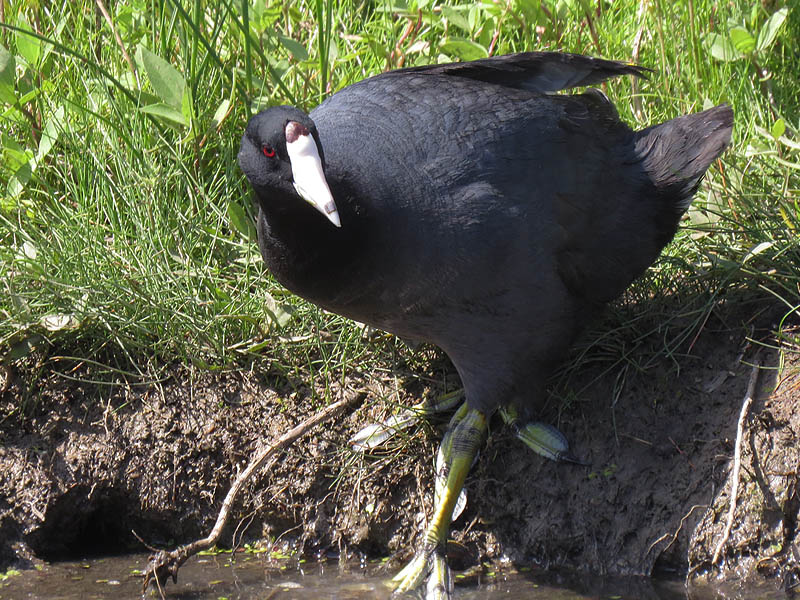
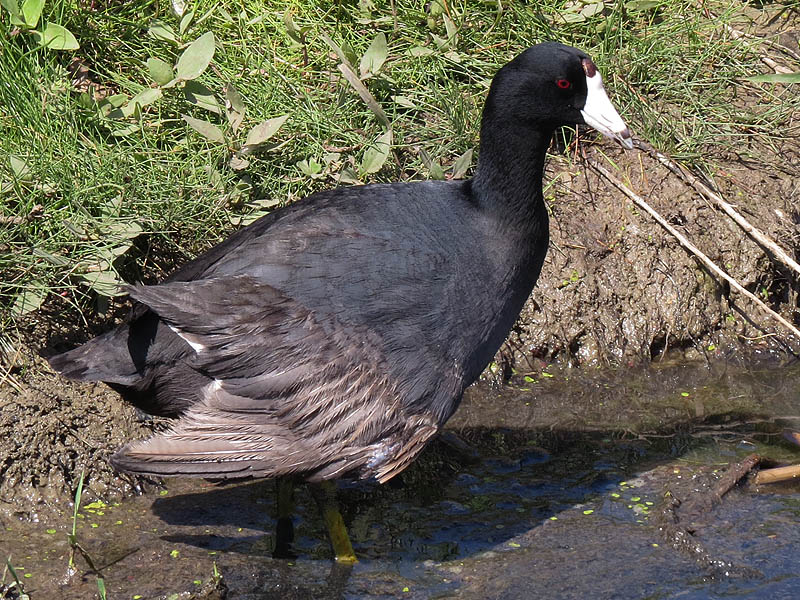
Also hidden in the reeds with the coot were a number of basking Red-eared Sliders. One old warrior seemed to be shedding as is evidenced by the peeling scute on its shell. Here is what Wikipedia has to say about turtle shells and scute shedding:
The turtle’s shell is covered in scutes that are made of keratin. The individual scutes as shown above have specific names and are generally consistent across the various species of turtles. Terrestrial tortoises do not shed their scutes. New scutes grow by the addition of keratin layers to the base of each scute. Aquatic chelonia shed individual scutes. The scute effectively forms the skin over the underlying bony structures; there is a very thin layer of subcutaneous tissue between the scute and the skeleton. The scutes can be brightly colored in some species, but the basal color is a grey to dark brown color dorsally; the plastral scutes are often white to yellow in base color.
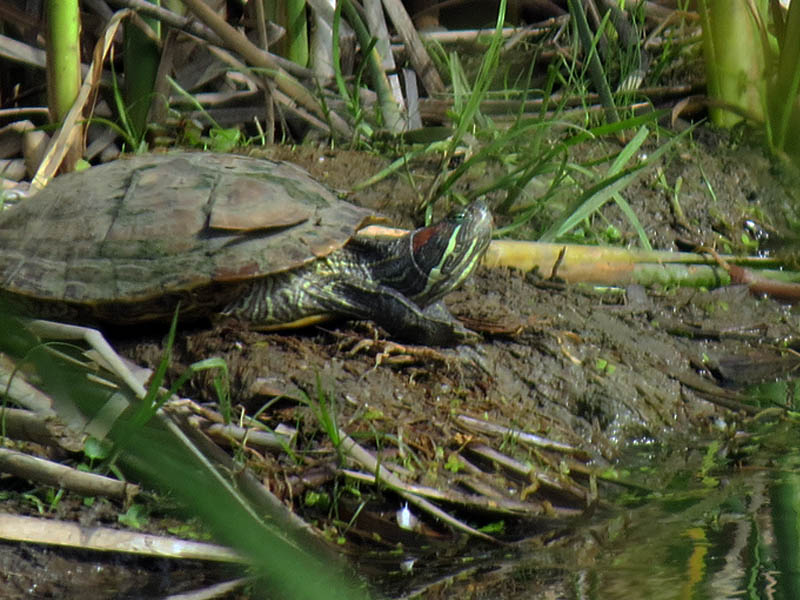
Interestingly, the Red-eared Sliders have learned that feeding time for the ducks can also be a bonanza for them. When park patrons begin tossing bread into the water the Red-eared Sliders will soon follow behind the ducks.
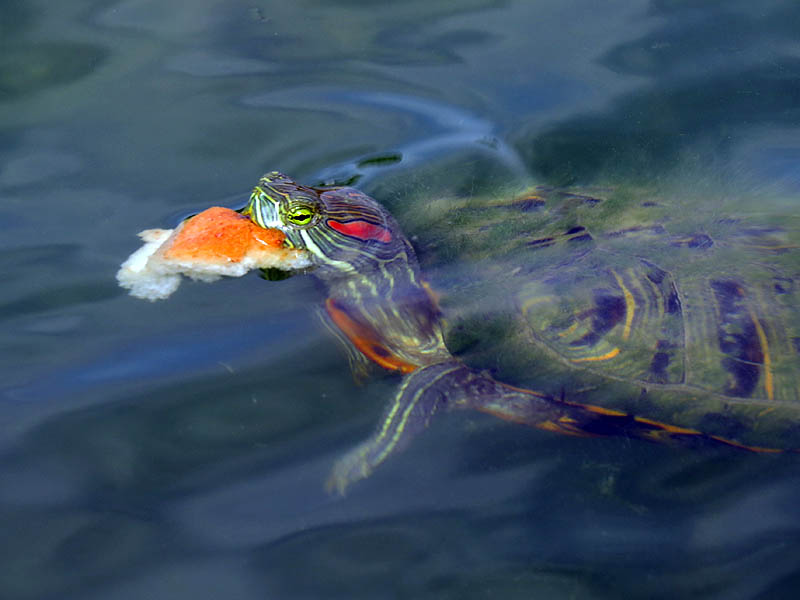
Speaking of ducks, the resident Mallards have been quite prolific this spring and there are juvenile ducks of all ages to be found here. Below you will see the reaction of a small group of semi-independent ducklings when bread starts to hit the water. Because these juveniles still cannot fly, they practically run across the surface of the water when they want to get somewhere quickly (like when there is bread to be eaten). These young ducks do not appear to be receiving any parental supervision at this time, but the siblings still congregate together for mutual reassurance I would guess.

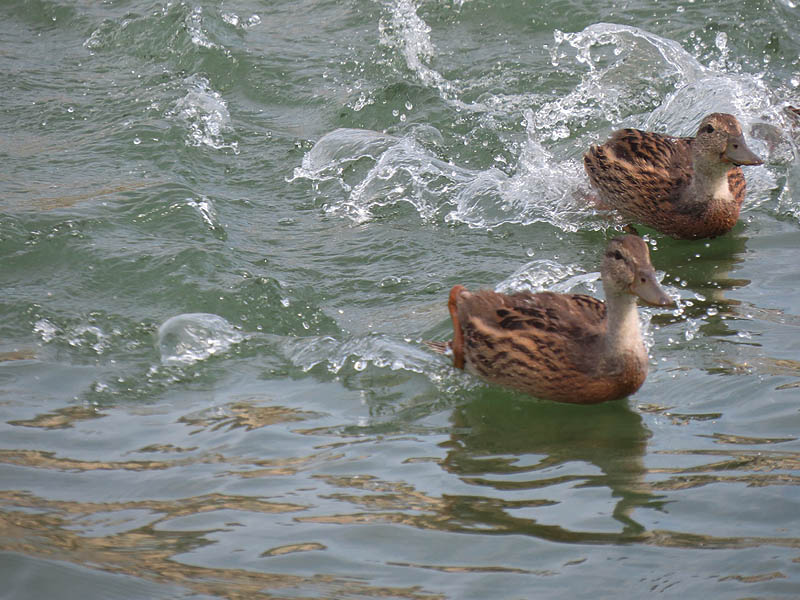
Nearby on the grassy lawn a group of slightly younger—and probably already well fed and full—Mallard duckling huddled and dozed under the watchful eye of their father. This group was not interested in the bread in the least.

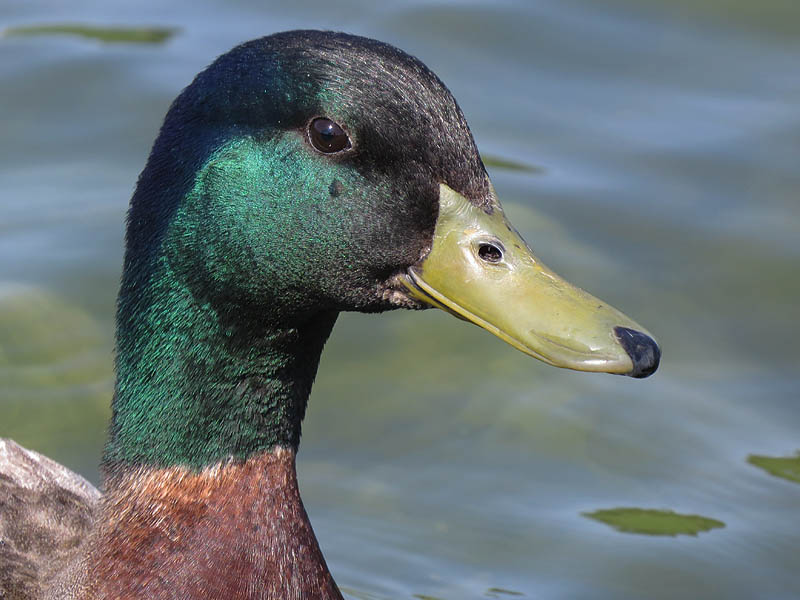
Even younger ducklings accompanied their mother while they fed on algae in the shallow water. I spotted three or four snapping turtles in the general vicinity, but so far this female has been doing a good job of keeping her ducklings safe.
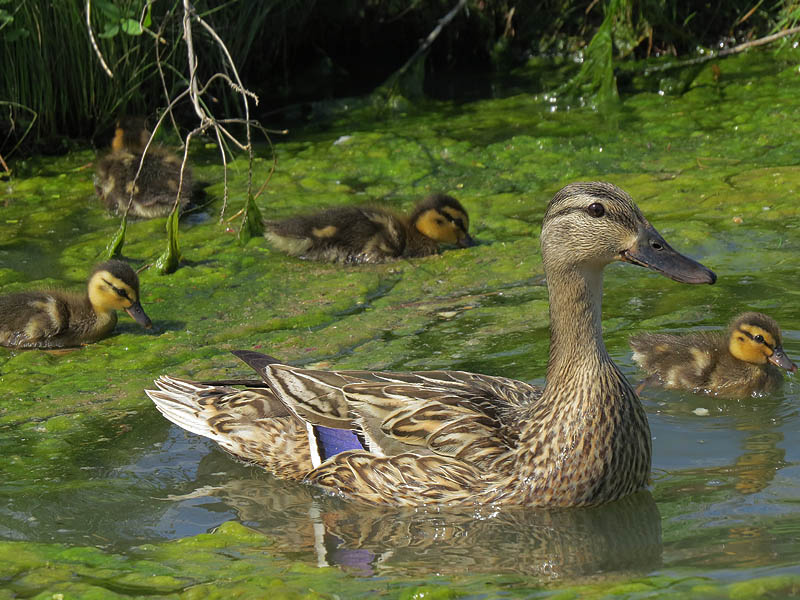
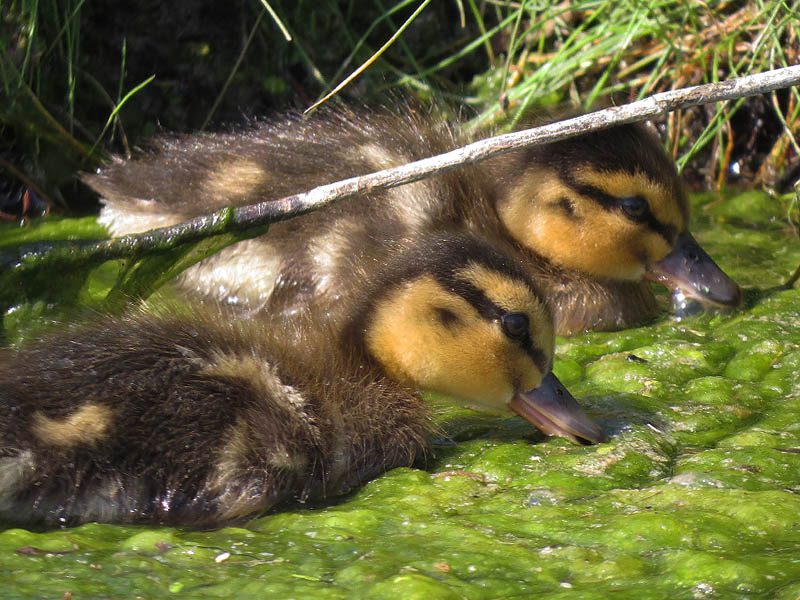
Our inseparable wild Mallard/domestic duck pair were also seen nearby—together as always.
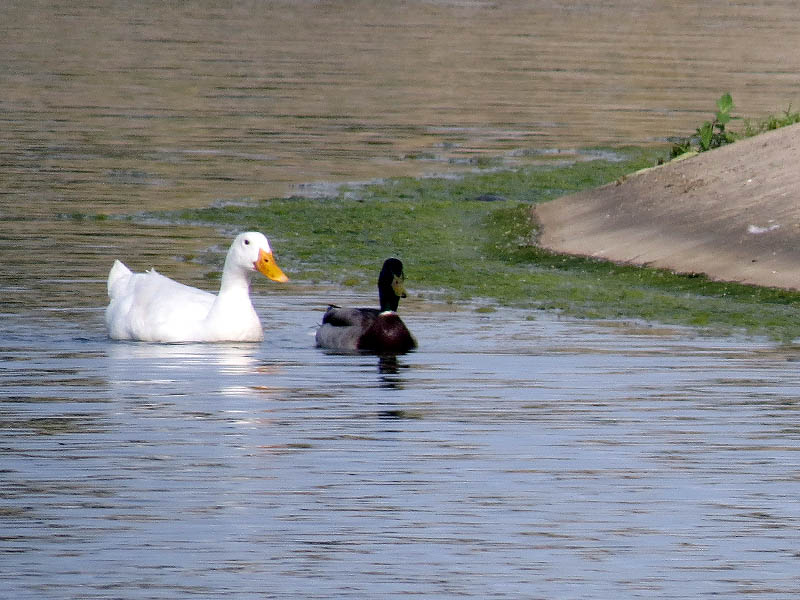
As we were watching the duck feeding, there was suddenly a ruckus in the air above us. A group of four or five male Mallards was chasing a lone female. The entire party crash landed in the water where there was much thrashing and splashing.
Just a short time later the female escaped to the shore, but she was quickly followed by three of the males who then forcibly held her down and mated her, each in turn. Eventually the female made her escape as she moved further and further from the water and the males finally gave up the chase.
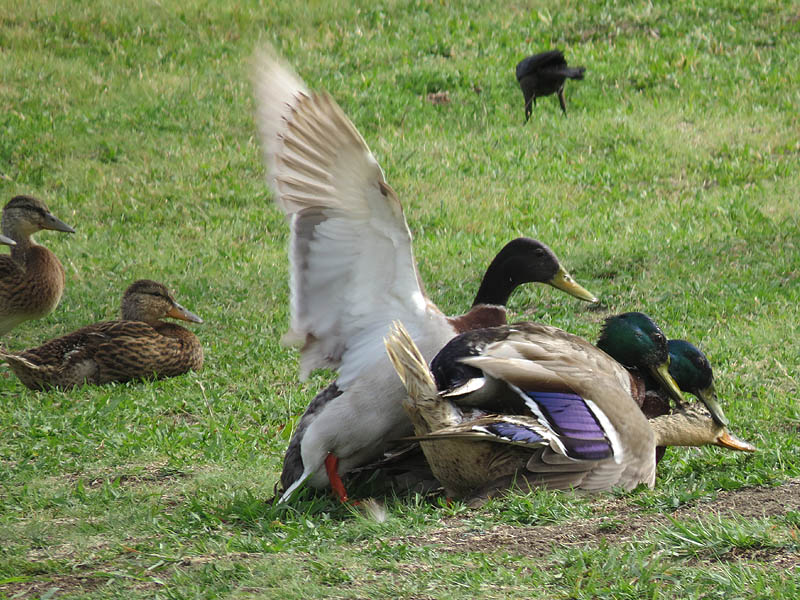
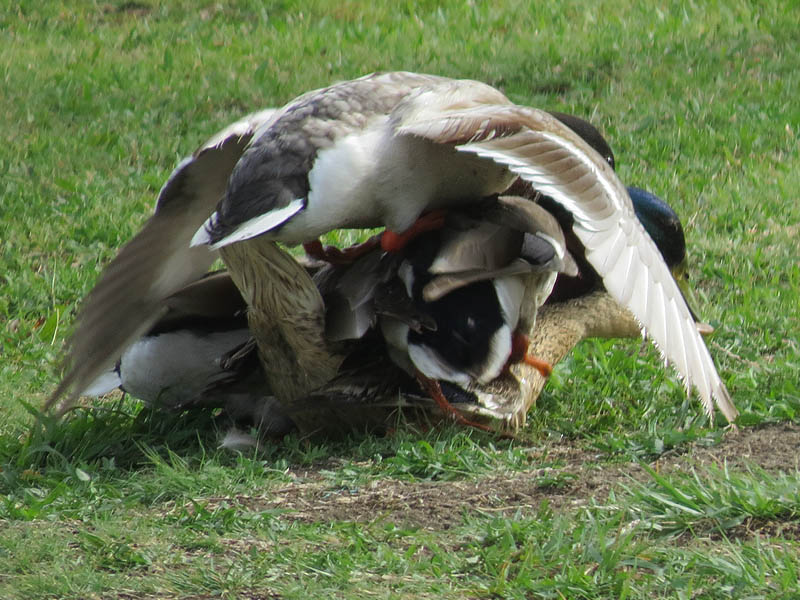
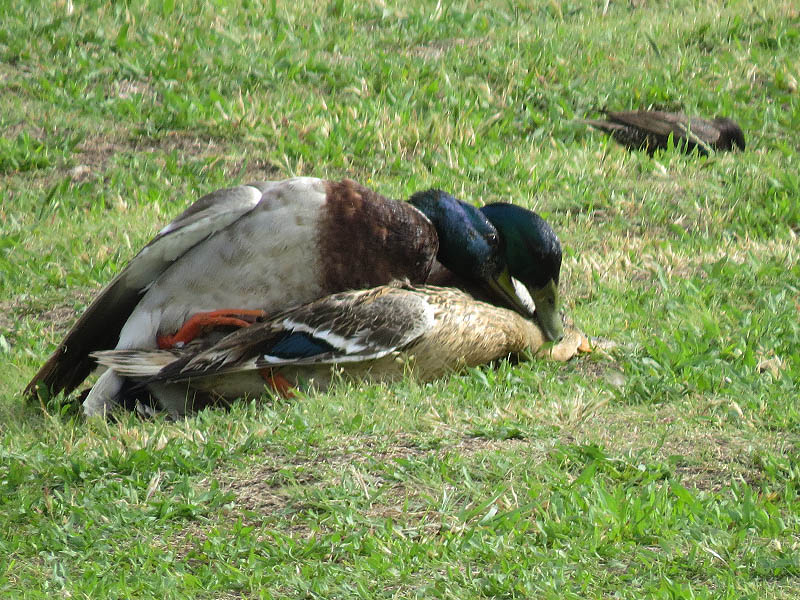
Here is how Wikipedia describes this odd and violent behavior:
When they pair off with mating partners, often one or several drakes end up left out. This group sometimes targets an isolated female duck, even one of a different species, and proceeds to chase and peck at her until she weakens, at which point the males take turns copulating with the female. Lebret (1961) calls this behaviour “Attempted Rape Flight” and Cramp & Simmons (1977) speak of “rape-intent flights”. Male Mallards also occasionally chase other male ducks of a different species, and even each other, in the same way.
Mixed in with this group was an unusual looking duck of the roughly the same size and shape of an adult male Mallard. This duck’s coloration was slightly different that the others, and at first I suspected that he might be a Mallard hybrid of some kind. In all likelihood, though, this is just a domestic duck known as the Bibbed Mallard.
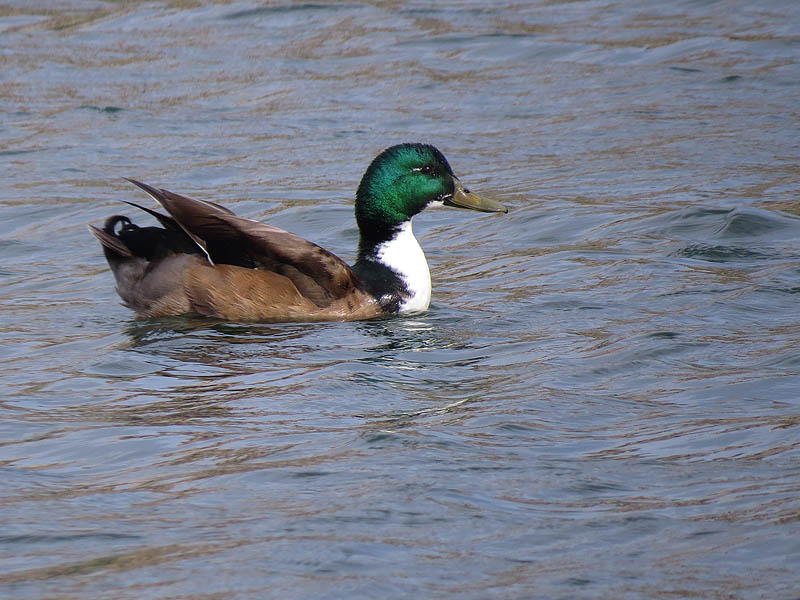

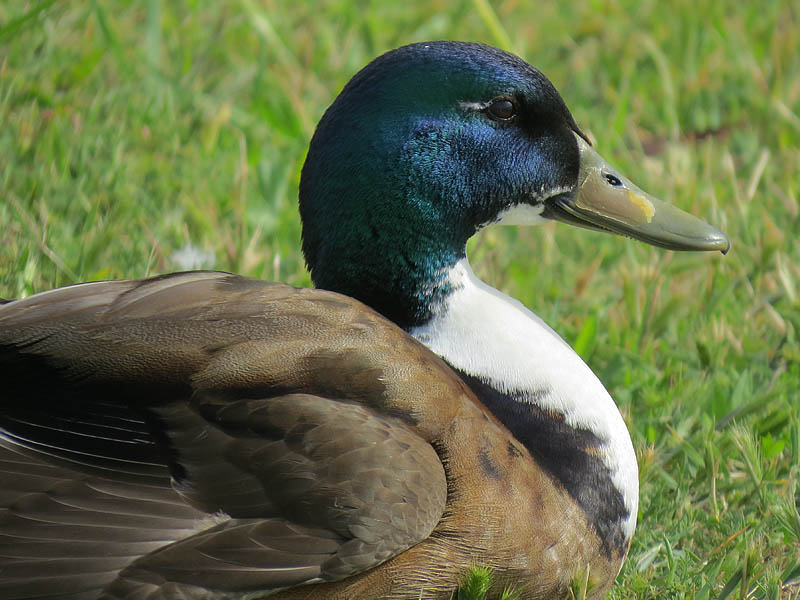
While on the subject of Mallards it would also be a good time to mention an interesting nesting situation I discovered in a parking lot not too far from this lake park. In this concrete environment a pair of breeding Mallards have built their nest on one of the parking lot islands and are now incubating eggs.

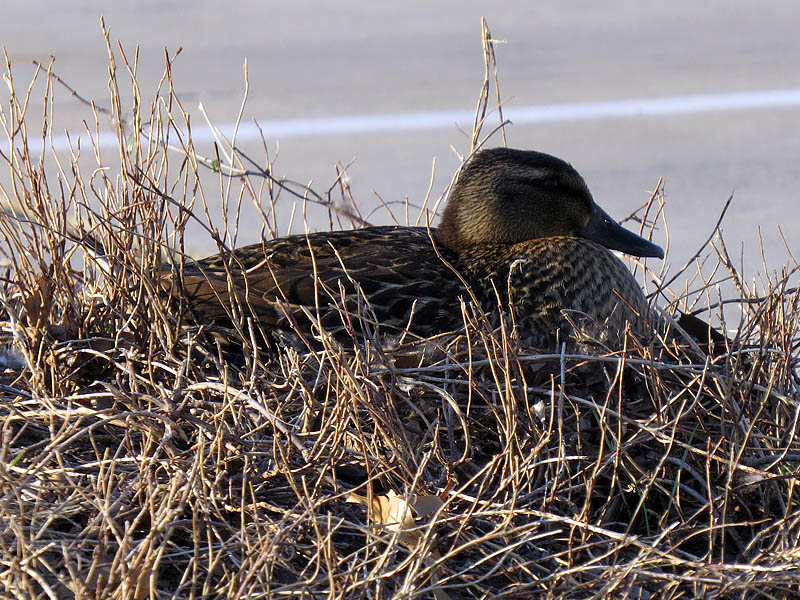
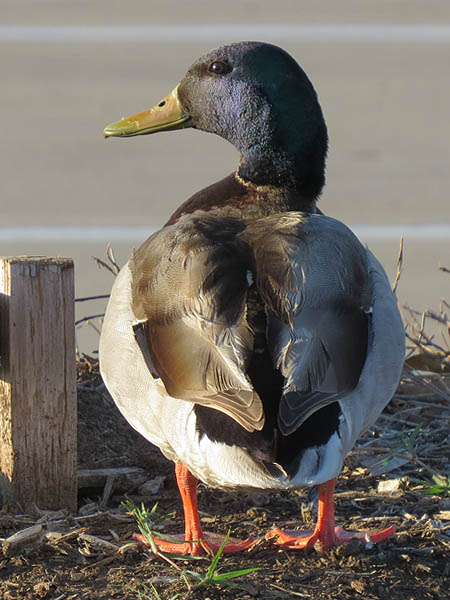
This is fascinating behavior for a couple of reasons. It is not hard to imagine the ducks confusing the layout of this parking lot for a body of water. The uniformly flat surface broken up every so often with extruding, vegetation covered islands is typical of marshy wetlands. Except for the absence of actual water, the analogy to a pond is very good.
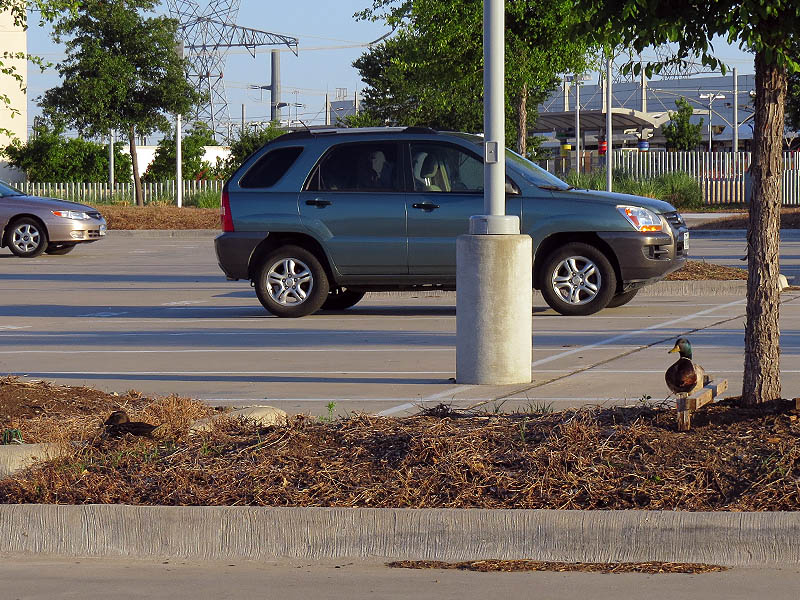
Also of note is the degree to which this environment reconfigures itself over the course of a day. This is a very busy parking lot. It fills up rapidly during the morning rush hour, only to empty out completely by the end of the day. People come and go constantly.

This will be a challenging spot for the ducks to hatch and raise a brood. There are water-holding drainage ditches nearby which will provide a great refuge for the duck family. But keeping the babies safe right after hatching could be a real challenge for these ducks, especially if they become mobile during a peak traffic time. I’m going to do my best to keep an eye on this nest over the next several weeks to see how things turn out.
NOTE: This post is part of a continuing series of observations: [ First | << Prev | Next >> ]




